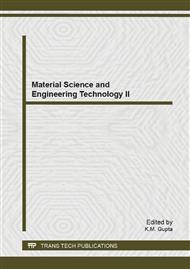p.169
p.174
p.179
p.184
p.188
p.193
p.197
p.201
p.205
Numerical Investigation of the SiGe/Si Heterostructure Including Interfacial Defects for Photovoltaic Applications
Abstract:
To improve the electrical performance and reduce the fabrication cost of the solar cell, thin-film solar-cell concepts are widely explored. In this context, many studies have been carried out to study the impact of the thin thickness of the material on the solar cell behavior. Recently, the Si1-xGex/Si heterostructure is considered as attractive alternative for photovoltaic applications due to their band structures, which allow getting an additional gain in the device efficiency. However, the growth of this material is not totally controlled, and the presence of interfacial defects is more than estimated after a growth run of this material. Therefore, new experimental and numerical investigations which capture the Si1-xGex/Si heterostructure behavior should be developed in order to build a complete Si1-xGex/Si-based solar cell model for photovoltaic applications. In this paper, we aim at highlighting the immunity of the Si1-xGex/Si heterostructure against the defects degradation effect at nanoscale level (thin films). The effect of interface defect on the heterostructure has been carried out by extensive simulation using Atlas 3-D simulator, including the device dimension and the Ge Mole fraction effects.
Info:
Periodical:
Pages:
188-192
Citation:
Online since:
December 2013
Authors:
Keywords:
Price:
Сopyright:
© 2014 Trans Tech Publications Ltd. All Rights Reserved
Share:
Citation:


